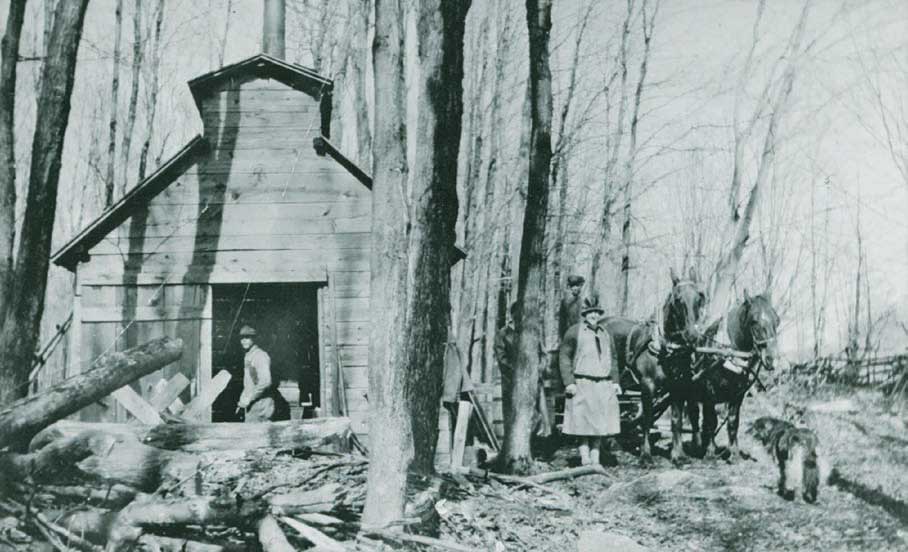
Image courtesy of the Community Archives of Belleville and Hastings County
Circa 1935
After spending the winter months chopping firewood and stoking coals in the hearth, the onset of the Maple Moon – the time when sap started running – must have been a welcome reprieve to the early settlers subjected to the confines of a Canadian winter.
According to Catharine Parr Traill, “With the assistance of children and the females of the house, a settler may, if he has a good sugar-bush make several hundredweight of sugar…Many a stout boy of fourteen or fifteen, with the aid of the mother and young ones has made sugar enough to supply the family, besides selling a large quantity.”
By the early 1900s, the huge iron cauldrons hanging over an open fire where replaced by flue-type evaporators – large pans with deep flutes in the bottom that allowed flames to come in contact with a larger area of the pan – came into use. The larger boiling surface resulted in quicker sap evaporation. The evaporators where housed in sugar shanties much like the one shown in the photo. Maple syrup production was labour intensive but the raw materials were free and the firewood was close at hand in the same woodlot where the trees were tapped. Few farmers could afford to turn their back on maple syrup production. And the profits from the sap tapped under the maple moon were as sweet as the maple syrup on their tables.